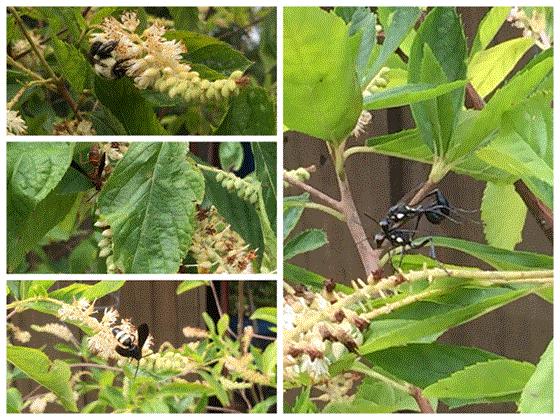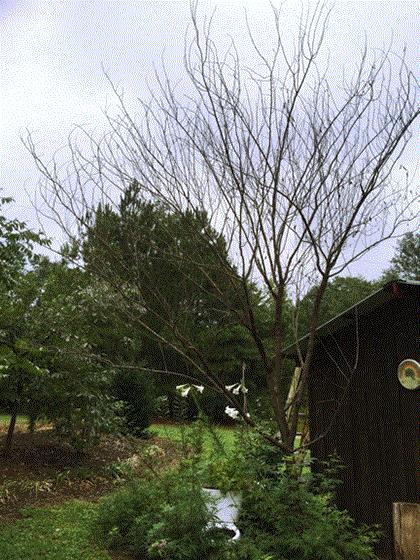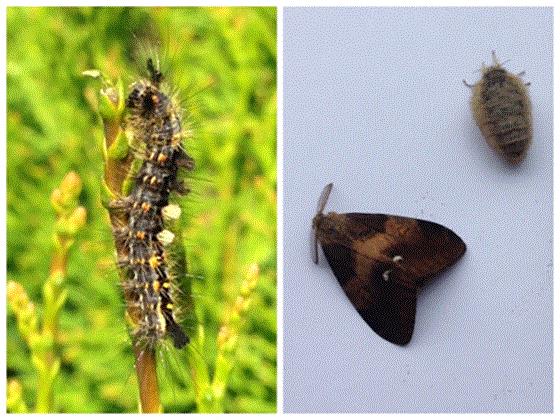USDA Funds Major Pollinator Project
On August 2, the USDA announced the projects that were awarded a Specialty Crop Research Initiative grant. This included a variety of projects across all specialty crops (including ornamentals, fruits, vegetables and tree nuts). The Green Industry scored a victory in this process, as Rutgers University was awarded $2.8 million for a project titled "Protecting Pollincators with Economically Feasible and Environmentally Sound Ornamental Horticulture."
Based on the project abstract, “this research project will provide crucial, science-based information for this decision making and provide opportunities for the ornamental horticulture industry to contribute to improved pollinator health by growing plants using the best production practices, thereby increasing pollinator forage quality and quantity in rural and urban landscapes.”
We reached out to AmericanHort and the Horticulture Research Institute (HRI) for their take on the award. Jill Calabro, HRI Research and Science Programs Director, replied.
“This announcement is welcome news. The studies will help fill knowledge gaps and guide the Green Industry towards the integration of IPM techniques in production and maintenance practices to decrease pesticide risk to bees. Almost everyone in our industry—growers, landscape professionals, retail centers and even consumers—will be better equipped to supply nutritious forage for bees in managed landscapes.”

Speaking of Pollinators
If you want a pollinator plant that's blooming its head off this time of year, give Clethra alnifolia a chance. I haven’t found a cultivar that I don’t love.
It's a tough-as-nails North American native that attracts anything with wings and an exoskeleton. Blooming white, it's one of those backdrop plants that holds its own as a green meatball from spring through mid-summer, when just about everything has cashed in their chips for the summer. Then poof—it blooms, and keeps blooming, for a month or more. Then it gives you wonderful red fall foliage before going dormant.
And while it blooms, you may as well play some Barry White, because it's the place to be for all the pollinators in your life. In fact, I just went out and counted 11 species of pollinators frolicking on it. Check out the pictures (Note: R-rated images included—not suited for all audiences).

Fireblight—Big Trouble in 2016
Two weeks ago, a fellow Ball Publisher (actually my new boss, Chris Beytes) and I were discussing the fact that we’ve both been hit by fireblight this year. Now, fireblight (Erwinia amylovora) is nothing new to the U.S., but it certainly can be a devastating bacteria if you're growing any pome fruits (or some shrubs) in the Rosaceae family.
The University of California IPM Guide sums it up best when describing susceptible plants by indicating “pear (Pyrus species) and quince (Cydonia) are extremely susceptible. Apple, crabapple (Malus species) and firethorns (Pyracantha species) also are frequently damaged. Fireblight is less common on hawthorn (Crataegus species), Spiraea, Cotoneaster, toyon (Photinia species), juneberry or serviceberry (Amelanchier species), loquat (Eriobotria), mountain ash (Sorbus species) and other related plants.”

In my case, as you can see in the photo above, I lost a BEAUTIFUL mature and seemingly healthy Prunus Purple Pride. I left for a week-long meeting in Minnesota and all was well, only to return to a dead tree. My disappointment was somewhat mitigated by the fact that Chris up in Chicago lost a 10-year-old mountain ash (misery loves company).
I sent out a message to university types across the U.S. and was shocked to learn that fireblight seems to be rampant in 2016, from Texas north to the Canadian border and east to the Atlantic, and prevalent in Northern California, Oregon and Washington as well.
So what gives? Why was this a particularly bad year? To form an opinion on this, first you must know that fireblight is most efficient at infecting trees as they're blooming or after damage occurs to the tree and while temperatures are 75F to 85F, especially when night temperatures stay above 55F. One theory is that this was a very warm year across the entire continental U.S., with temperatures running 2 to 10 degrees above normal. These warmer temperatures likely fueled the fire.
Did you suffer the wrath of fireblight this year? If so, click below to let me know where you live and what you lost.
Selecting Equipment—Unanticipated Cost
The debate constantly rages surrounding the color paint you prefer to see on your equipment. Options include orange (Kabota/Stihl), green (John Deere), blue (New Holland), yellow (Cat), red (Honda), etc.
In the past, a lot of the debate was based on real-world dependability and equipment engineered to suit your needs. But visiting equipment dealers these days (a hobby of mine—it’s when I can dream a little dream), it's apparent that equipment is being engineered to maximize diversity of uses.
For example, check out those multi-task tools that shapeshift from edger to sweeper to dethatcher to mini-tiller. Dependability of equipment, from tractor to tiller, has also increased rapidly in the last decade. There are still a few dogs out there, but they're quickly fading from the equipment marketplace.
SO, what should you make your equipment purchasing choices based on? In actuality, most people do so based on two factors. The first is brand commitment and the second is existing relationships with equipment dealers. I propose to you an alternative method of making your choice, one that can save you a lot of money down the road in unanticipated costs. That's the replacement cost of OEM (original equipment manufacturer) parts. Not those things where perfectly fine aftermarket parts can be obtained, such as filters or blades. Rather, those things that require (or it's highly recommended to use) OEM parts, such as engines or lawnmower decks.
Just for kicks, I called around and inquired on the cost of OEM replacement engines (in the crate) for four brands of commercial-grade zero-turn mowers with a 70- to 72-in. deck and 25 to 27 horsepower powerplants.
The results were staggering! Engine costs (from lowest to highest) were $1,460, $2,240, $3,010 and $4,880. Holy smokes, that's a wide range.
Hopefully, it will assist you in making more informed purchases in the future. Just make a few calls and potentially save yourself a few thousand dollars down the road.
Boxwood: Northern Exposure
This week, I attended the American Society of Horticultural Science meeting in Atlanta. This is where the academic world comes together each year. To paraphrase Obi-Wan Kenobi, “You will never find a more wretched hive of horticultural geeks.”
Dr. Stan Hokanson, a plant breeder at The University of Minnesota, presented some very interesting data on boxwood trials in Minnesota. Minnesota, and locations north of Zone 5a, are known to be suspect environments for boxwood, and particularly English boxwood, due to a lack of cold hardiness and midsummer leaf yellowing.
But in the true academic spirit (or stubbornness), Dr. Hokanson and colleagues planted 20 cultivars of boxwood to trial for adaptability to the great wild north. The result was a success, with the cultivars Mont Bruno, Northern Charm, Chicagoland Green, Green Velvet and Green Ice deemed suitable for Zone 4 landscapes. And for those who wonder how many winters these plants were subjected to, it was a 10-year study!
Those are results you can take to the bank!
Our Wacky Wonderful World—Notes from the Edge of Sanity
This edition is brought to you by Sylvia Schaap, a thrifty University of Guelph (Viva Canada!) student and summer intern at Qualitree Propagators in Rosedale, British Columbia, who demonstrates IPM at its finest.
Just when I give those Millennials grief in the last newsletter (and they sure let me have it for doing so), they come through and shine in this newsletter. So take it away, Sylvia ... I can already tell you’re going to be a rock star! (Editor's note: she already is—check out her guest editorial in the July GrowerTalks.)
The Jar in the Window

The jar in the window was a company-wide source of interest for a week. We had discovered several pockets of colorful, fuzzy caterpillars—all ages and stages—at work on Thuja plants in the nursery and we decided to rear them out in the grower’s office for identification’s sake.
A brown-and-white-marked male hatched, confirming they were Rusty Tussock Moths, polyphagous (meaning they feed on a variety of hosts) defoliators. But after consulting the BC Forestry website, which indicated we should not be overly concerned, our collective panic faded into interest, and we put the lively fellow in the freezer (to enjoy an early winter).
Back in the jar in the window, a female hatched a few days later, much to our delight. She was completely wingless; just a fluffy ball with eyes, and she clung to her cocoon, pumping out pheromones. Because the females are homebodies—laying their eggs on their own cocoons and dying shortly—the hungry caterpillars occur in concentrated pockets and don’t spread quickly.
Relieved, we held a photography session and the female joined frozen Mr. Rusty, insect-collection bound.
Peace be with you,

Matthew Chappell
Editor-at-Large
Nursery & Landscape Insider
This email received by 36,788 nursery and landscape nerds
If you're interested in advertising in Nursery & Landscape Insider, contact Kim Brown ASAP and she'll hook you up.